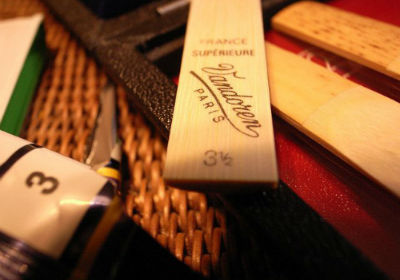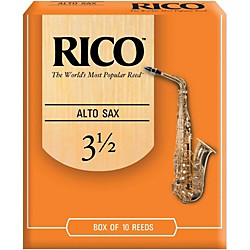October 05, 2015
Signs It’s Time to Replace Your Saxophone Reeds


So, you’ve learned how to assemble a reed properly, clean your saxophone perfectly, and can even play through a few of your favorite songs without making any mistakes. You’re probably feeling pretty accomplished, right? But, do you know when it’s time to replace saxophone reeds? Can you tell when a reed is dying? First and foremost, don’t think about replacing reeds as a money-grab by the reed manufacturers. They may be expensive and they may need to be replaced often, but reedmakers are in the business of helping your instrument produce the best sound possible. So, if you’re curious about when it’s finally time to replace saxophone reeds, read on for more information.
Is the Tip Chipped?
If you’re noticing that the tip of your saxophone reed is chipped, it may be time for a replacement. In some cases, chipped tips won’t affect playing, while in other instances chipped reed tips will make the reed completely unplayable. To verify the extent of the damage, observe where the tip is chipped. Chips near the center of the tip are worse than chips in the corners, and you may be able to get away with playing with chips near the corners for a little while longer. If you prefer to preserve the life of your reeds for as long as possible, there’s a remedy besides replacement: clipping the tip shorter and re-scraping it. In doing so, you’ll sharpen the tips edge. Although this is one remedy, it shouldn’t be attempted if you’ve never one it before. In that case, simply replace the saxophone reed as soon as possible.


Is the Saxophone Reed Cracked?
Unfortunately, there isn’t a remedy to cracked reeds. Here’s the reason why: reeds vibrate hundreds of times each second, and uneven reeds won’t vibrate. Without vibration, there’s no sound. While some advocate using superglue to mend cracked reeds, the polymers won’t vibrate the same as bamboo. Plus, strong household chemicals such as glue and industrial strength cleaning solutions shouldn’t be anywhere near your mouth or your instrument. If you’re noticing a lot of cracks or warps in your reeds, you may wish to consider switching from natural saxophone reeds to synthetic. Although some believe synthetic reeds sound different than natural reeds, they tend to be easier for new saxophonists to handle, require less maintenance, and usually come at a lower price point.
Are You Noticing Black Mold?
It may sound disgusting, but if you notice black mold growing on your saxophone reeds it’s time to toss them out. Over time, the bacteria in your mouth causes mold to grow and, if you continue to play with moldy reeds it’s like sucking on an old piece of chewing gum you found underneath a table. Whether you’ve been storing your saxophone reed in a pill bottle or the same plastic vial it came in, best practice is to soak it in water instead of your mouth. Although you can try cleaning the reed’s fibers, the process is complex and your reed won’t live much longer either way. As touched on in the previous paragraph, synthetic reeds are a good alternative for a variety of reasons, including that they tend to grow mold less often than their natural counterparts.


Can You Extend the Life of Saxophone Reeds?
If you’re taking private lessons at a studio, you may notice that the more seasoned saxophonists carry their saxophone reeds around in a case. While all reeds are packaged in individual plastic sleeves, these sleeves aren’t ideal for long-term storage. Not only do the plastic sleeves do a poor job at preventing warpage but, if you store the sleeves in your saxophone case, they can become chipped or damaged during transport. In addition to making sure you’re properly wetting and maintaining your reeds, investing in a quality reed case is one of the most important things you can do to extend the life of your saxophone reeds, regardless of the brand or hardness.
For even more information about reeds, check out our Tips for Reed Success: Break In, Rotate, and Properly Store Your Reeds.
Photo via Toshiyuki IMAI, CC







